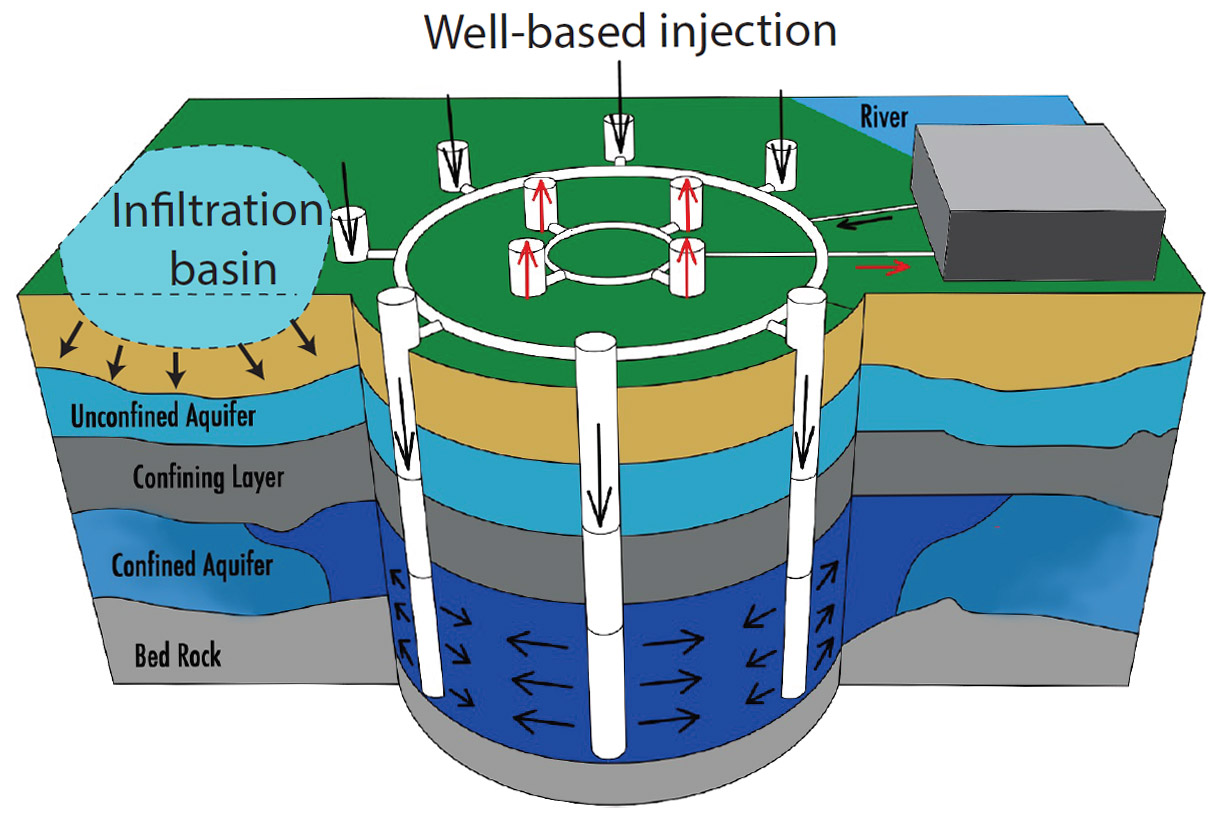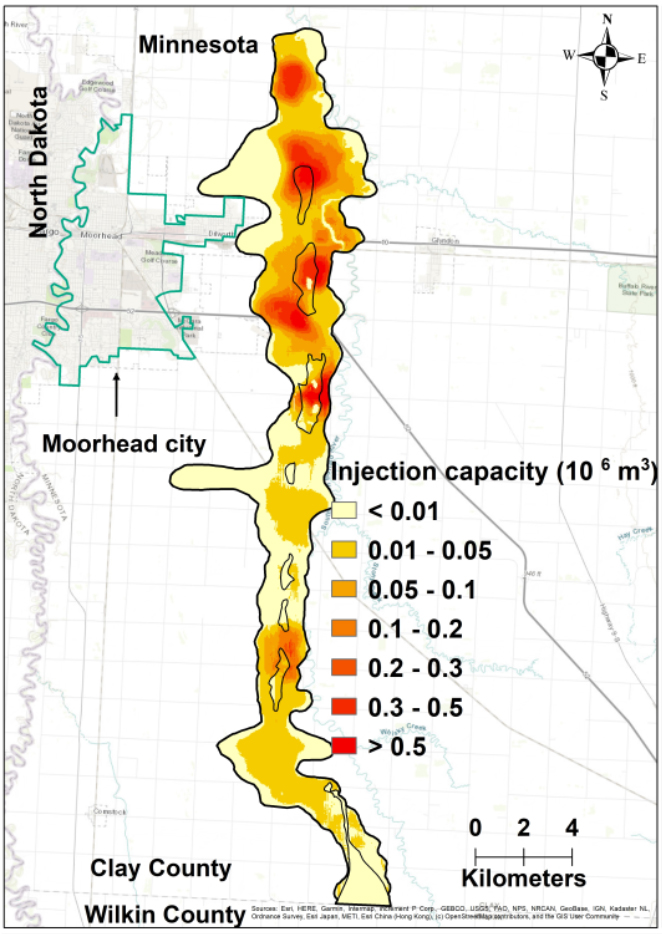U of M and Freshwater researchers to evaluate injection wells, infiltration basins
With groundwater shortages becoming a concern in some areas of the state, researchers at the University of Minnesota and Freshwater will be poised to assist by deploying a first-of-its-kind GIS mapping tool that could help pave the way for managed aquifer recharge in Minnesota.
Also known as water banking, managed aquifer recharge usually involves injecting water into the ground through wells, or constructing infiltration basins, to essentially “bank” water underground to be used later for drinking or irrigation. This project, funded by the Environment and Natural Resources Trust Fund, will look at both methods to analyze the recharge potential of at least two Minnesota aquifers.

Peter Kang, hydrogeology professor at the University of Minnesota, will lead a research team that includes Freshwater Research and Policy Director Carrie Jennings. Freshwater’s primary role will be to communicate with state agency personnel, tribes, legislators and other stakeholders – and to make policy recommendations that would allow managed aquifer recharge to be more easily implemented in the future.
“Groundwater shortage is becoming a national concern and underpins the economic security and climate resilience of a community,” explained Kang. “A promising solution is to replenish groundwater reserves using either injection wells or infiltration ponds, and we need to be prepared as a State to say how best to safely and sustainably refill the tank.”
Jennings added, “This project looks at both the technical approaches and policy framework so that when a City needs to act, there is a clear path forward.”

Mapping recharge potential
Recharge potential is the maximum amount of water that can safely be recharged into an aquifer. Determining this can be quite complicated with a host of variables that include aquifer thickness, hydraulic conductivity and rock/sediment properties – to name a few.
The mapping tool will also consider various aquifer types such as unconfined, confined, leaky, nonleaky and fractured. This is important because there is currently no injection capacity estimation method for fractured aquifers, which are major sources of drinking water in many regions of Minnesota.
In considering specific recharge sites, the researchers will seek to answer a number of questions, including:
- Which site is suitable for aquifer recharge?
- How much water can be safely stored using injection wells?
- How much recharge can be achieved through infiltration basins?
- How will the recharge rate change over time?
- Which hydrogeologic and operational parameters are important for successful aquifer recharge?
A path to permitting
The U.S. Environmental Protection Agency (EPA) regulates injection wells under the Safe Drinking Water Act, while the Minnesota Department of Health has permitting authority over extractive wells like those currently used by residents, municipalities and irrigators. The research team will need a conditional use permit from both agencies to perform field testing for this project.
In order for Minnesota to eventually use managed aquifer recharge as a regular practice, the state would likely need to assume primacy over injection wells from the EPA. Also, changes to the state well code would need to be approved by the Minnesota Department of Health.
Throughout the project, Freshwater will provide updates to state and tribal agencies in the region, along with the Metropolitan Council, to communicate the scope and intent of the research.
Managed aquifer recharge has been gaining more and more attention in recent years, especially in drought stricken states like Arizona. While Minnesota’s drinking water supply is still relatively abundant, limited rainfall over the past two summers has sparked similar concerns here in the Midwest.
“Even a water-rich state like Minnesota should be prepared for local water shortages and develop the tools needed to alleviate them,” said Jennings.
“We also know that some water-intensive companies like Coca-Cola are leading the way by promising to replenish water used in their bottling plants in key watersheds. If industry wants to lead the way to sustainable groundwater use through managed aquifer recharge, Minnesota should be ready to engage.”